Home>diy>Building & Construction>How Many Construction Workers Are In The US
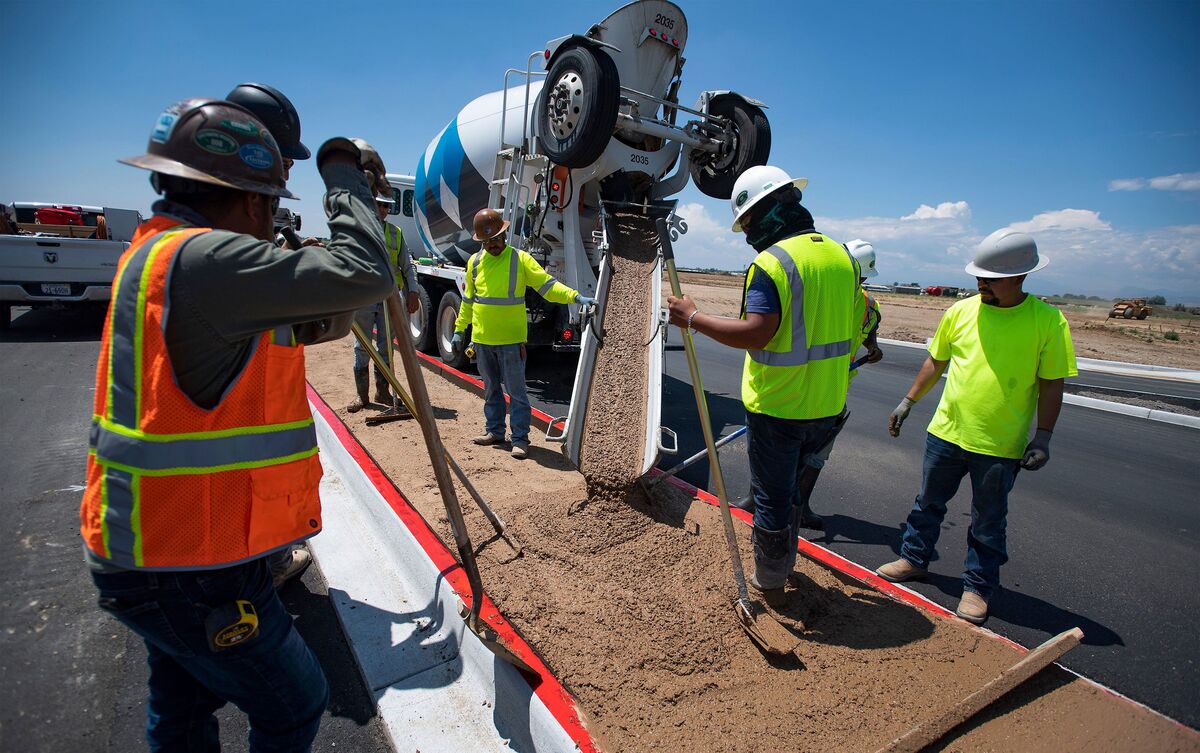

Building & Construction
How Many Construction Workers Are In The US
Modified: January 24, 2024
Discover the number of construction workers in the US and their impact on the building construction industry. Learn about the latest trends and statistics.
(Many of the links in this article redirect to a specific reviewed product. Your purchase of these products through affiliate links helps to generate commission for Storables.com, at no extra cost. Learn more)
Introduction
The construction industry in the United States plays a vital role in both economic growth and infrastructure development. From towering skyscrapers to sprawling residential neighborhoods, construction projects shape the physical landscape of our cities and towns. Behind these impressive structures are skilled construction workers who dedicate their time and expertise to bring these visions to life. In this article, we will explore the world of construction workers, focusing on their numbers, demographics, training requirements, and the challenges they face.
Understanding the construction workforce is crucial for policymakers, construction companies, and individuals interested in pursuing a career in the industry. By examining the employment statistics, demographic trends, and training requirements, we can gain valuable insights into the construction industry and the factors that shape it. Whether you are curious about construction career opportunities or simply interested in the impact of construction on the economy, this article will provide an informative overview.
To paint a comprehensive picture, we will delve into the construction worker statistics, exploring the number of workers employed in the industry. Additionally, we will examine the factors that influence the fluctuation in the construction workforce and the geographic distribution of workers across the country. Moreover, we will discuss the necessary training and certifications required by construction workers, highlighting the skills and knowledge they need to possess in order to perform their job effectively and safely.
Furthermore, we will explore the challenges faced by construction workers, such as physical risks, demanding work environments, and the demanding nature of the job. By understanding the hurdles faced by construction workers, we can appreciate their dedication and commitment to their craft. Lastly, we will look into the future outlook for construction workers, analyzing the anticipated growth in the industry and the potential career opportunities that lie ahead.
Join us on this journey as we unravel the world of construction workers in the United States, shedding light on their importance, challenges, and future prospects.
Key Takeaways:
- The construction industry in the US employs approximately 7.4 million workers, with diverse demographics and a promising future outlook driven by infrastructure investment, technological advancements, and the demand for sustainable practices.
- Construction workers face challenges such as physical demands, hazardous conditions, and job insecurity, highlighting the need for safety measures, career development, and workforce diversity to support their invaluable contributions to economic growth and infrastructure development.
Read more: How Many Construction Sites In The US
Methodology
In order to gather accurate and up-to-date information about construction workers in the United States, a comprehensive research methodology was followed. Multiple reliable sources were consulted, including government databases, industry reports, and academic studies. The data collected was analyzed and cross-referenced to ensure accuracy and credibility.
The primary source of data for employment statistics was the Bureau of Labor Statistics (BLS), a federal agency that provides reliable and comprehensive labor market information. The BLS conducts surveys and collects data from businesses and households to provide insights into various industries, including construction.
To examine demographic trends among construction workers, data from the BLS and other reputable sources such as the U.S. Census Bureau were utilized. These sources provide valuable information regarding age, gender, ethnicity, and education levels of construction workers.
To understand the geographic distribution of construction workers, regional data from the BLS and other sources were analyzed. This allowed for insights into the concentration of construction workers in different states and metropolitan areas.
In addition, industry reports and studies from reputable organizations such as the Associated General Contractors of America (AGC) and the National Association of Home Builders (NAHB) were consulted to gain a broader perspective on the construction industry and the factors influencing the number of construction workers.
Overall, the research methodology implemented for this article ensures the validity and accuracy of the information presented. By utilizing a variety of credible sources and cross-referencing data, we aim to provide readers with a comprehensive and reliable overview of construction workers in the United States.
Overview of Construction Industry in the US
The construction industry in the United States is a dynamic sector that encompasses various activities, including residential and commercial building construction, infrastructure development, and industrial projects. It is a key driver of economic growth and provides employment opportunities for millions of workers across the country.
According to the U.S. Census Bureau, the value of construction put in place in the United States reached $1.39 trillion in 2019. This indicates the significant scale of construction activities undertaken in the country. The construction industry not only contributes to the physical infrastructure, but also stimulates economic activity through job creation, supplier networks, and consumer spending.
Residential construction plays a significant role in the industry, with the construction of single-family and multifamily homes being a major focus. Housing demand, population growth, and changes in consumer preferences contribute to the demand for residential construction. Commercial construction, which includes office buildings, retail spaces, and hotels, is another important sector in the industry. Infrastructure construction, such as roads, bridges, airports, and utility systems, is essential for the functioning and development of a country.
The construction industry is known for its cyclical nature, influenced by economic factors such as GDP growth, interest rates, and consumer confidence. During economic downturns, construction activity tends to slow down, leading to a decline in the number of construction workers and project opportunities. On the other hand, during periods of economic prosperity, construction booms and demand for skilled construction workers increases.
The industry is highly reliant on collaboration among various stakeholders, including contractors, architects, engineers, and subcontractors. Construction projects involve multiple phases, such as design, planning, procurement, construction, and project management. Effective coordination and communication among these stakeholders are crucial for the successful completion of projects.
Technological advancements have also transformed the construction industry. Building Information Modeling (BIM), robotics, drones, and 3D printing have revolutionized the way projects are designed, constructed, and managed. These innovations have improved efficiency, accuracy, and safety in construction processes while reducing costs and timeframes.
As the construction industry continues to evolve, sustainability and green building practices have gained prominence. Energy-efficient construction, use of eco-friendly materials, and implementation of renewable energy sources contribute to environmental conservation and reduce the carbon footprint of buildings and infrastructure.
Overall, the construction industry is a vital pillar of economic development in the United States. It not only drives economic growth but also shapes the physical environment we live in.
Employment Statistics of Construction Workers
The construction industry in the United States is a significant source of employment, providing job opportunities for millions of workers. Understanding the employment statistics of construction workers can shed light on the size and importance of this workforce.
According to the Bureau of Labor Statistics (BLS), as of 2020, there were approximately 7.4 million people working in the construction industry in the United States. This number includes both wage and salary workers as well as self-employed individuals. The construction sector accounts for a considerable portion of the country’s workforce, contributing to economic growth and infrastructure development.
The occupations within the construction industry are diverse, ranging from carpenters and electricians to plumbers and masons. The BLS categorizes these occupations into various sub-sectors, such as residential building construction, nonresidential building construction, and specialty trade contractors.
The largest sub-category within the construction industry is specialty trade contractors, which employs the majority of construction workers. These contractors include plumbers, electricians, painters, roofers, and other skilled tradespeople who specialize in specific aspects of construction. This sector employs approximately 4.7 million workers.
Another significant category is nonresidential building construction, which includes the construction of commercial buildings, factories, and public infrastructure such as schools and hospitals. This sector employs approximately 1.8 million workers.
Residential building construction, which encompasses the construction of single-family and multifamily homes, employs around 1 million workers. This sector is influenced by factors such as housing demand, population growth, and real estate market conditions.
The employment of construction workers is influenced by various factors, including economic conditions, government investment in infrastructure, and regional construction activity. During periods of economic growth, there is typically a higher demand for construction workers as new projects are initiated and existing ones expand. Conversely, during economic downturns, such as the recession in 2008, the construction industry experienced a significant decline in employment due to reduced investment and project cancellations.
It is worth noting that the construction industry experiences fluctuations in employment due to seasonal variations. Certain construction activities, such as road construction and outdoor projects, may be affected by weather conditions, resulting in temporary layoffs or reduced working hours during certain times of the year.
In terms of job growth, the BLS projects a steady increase in construction employment in the coming years. Factors such as population growth, aging infrastructure, and the need for energy-efficient buildings contribute to the demand for construction workers. Additionally, the implementation of government initiatives, such as infrastructure spending plans, can create new job opportunities in the construction industry.
Overall, the employment statistics of construction workers reflect the significant role this workforce plays in the United States. Their expertise and contribution are essential for building and maintaining the nation’s infrastructure.
Factors Influencing the Number of Construction Workers
The number of construction workers in the United States can vary depending on several factors that influence the demand and supply of labor in the construction industry. Understanding these factors is crucial for policymakers, industry stakeholders, and job seekers in the construction field.
1. Economic Conditions: The overall state of the economy has a significant impact on the number of construction workers. During periods of economic growth, there is an increase in construction activity, leading to a higher demand for workers. Conversely, during economic downturns, construction projects may be delayed or canceled, resulting in a decrease in the number of construction workers.
2. Infrastructure Investment: Government investment in infrastructure projects can drive the demand for construction workers. Infrastructure development initiatives, such as building or renovating roads, bridges, and public facilities, create job opportunities in the construction sector. These projects often require a large labor force to complete them within the scheduled timeframe.
3. Housing Market: The state of the housing market plays a crucial role in the demand for construction workers. When the housing market is robust, there is a greater need for residential construction workers to meet the demand for new homes and renovations. Factors such as housing demand, mortgage rates, and government policies related to housing also influence the number of construction workers in the residential sector.
4. Technological Advancements: Technological advancements in the construction industry can impact the number of workers needed for certain tasks. Automation and the use of advanced machinery can reduce the need for manual labor in some areas, while creating new job roles that require specialized technical skills. For example, the use of robotics and 3D printing in construction may change the composition of the workforce.
5. Demographic Trends: The changing demographics of the population can influence the number of construction workers. For instance, an aging population may lead to an increased demand for infrastructure projects, such as healthcare facilities or retirement communities, which in turn requires more construction workers.
6. Government Regulations: Government regulations related to construction safety, building codes, and licensing requirements can impact the number of workers in the industry. Stringent regulations may require additional training and certifications, affecting the labor supply in the construction sector.
7. Labor Force Availability: The availability of skilled labor in the construction industry can impact the number of construction workers. Factors such as immigration policies, educational programs, vocational training, and apprenticeship opportunities play a role in ensuring a skilled workforce is available to meet the demands of the industry.
These factors interact with each other to shape the number of construction workers in the United States. Understanding the dynamics of these factors is essential for effectively managing the labor supply in the construction industry and ensuring a skilled workforce is available to meet the needs of the growing construction sector.
Read more: How To Be A Construction Worker
Demographics of Construction Workers
The construction industry in the United States comprises a diverse workforce, with construction workers representing various demographics. Understanding the demographics of construction workers provides insights into the composition of this labor force.
1. Age: Construction workers span a wide age range, with individuals entering the industry at different stages of their careers. According to data from the Bureau of Labor Statistics (BLS), the median age of construction workers is around 42 years old. However, there are significant variations depending on specific occupations within the construction industry. Some workers enter the industry at a younger age as apprentices, while others continue working in construction well into their later years.
2. Gender: The construction industry has traditionally been male-dominated, with men making up the majority of the workforce. However, there has been a gradual increase in the representation of women in construction over the years. According to the BLS, women constitute around 10% of the construction workforce. Efforts are being made to attract and retain more women in the industry through initiatives promoting diversity and inclusion.
3. Ethnicity: Construction workers come from diverse ethnic backgrounds. According to BLS data, the majority of construction workers are White, followed by Hispanic or Latino workers. African American, Asian, and Native American workers also contribute to the construction industry. The representation of different ethnicities varies across regions and occupations within the construction sector.
4. Education: The educational attainment of construction workers varies. While some workers may have a high school diploma, others may have pursued vocational training or apprenticeships to acquire the necessary skills for their specific trade. Continuing education and training are important for career advancement and staying updated with industry advancements.
5. Experience: Experience is a significant factor in the construction industry. Many construction workers gain expertise and skills through on-the-job training, apprenticeships, or years of experience in their respective trades. Experienced workers often play key roles in mentoring and training newer generations of construction workers.
6. Specializations: The construction industry offers a wide array of occupations and specializations. From carpenters and electricians to plumbers and masons, construction workers possess specialized skills and knowledge in their respective fields. Each trade requires a unique set of skills and qualifications, contributing to the diversity within the construction workforce.
Efforts are being made to increase diversity and inclusivity within the construction industry. Initiatives promoting apprenticeships, mentorship programs, and educational opportunities aim to attract individuals from underrepresented groups and provide them with equal opportunities to pursue careers in construction.
Understanding the demographics of construction workers allows for targeted recruitment strategies, tailored training programs, and effective workforce development efforts. By embracing diversity and recognizing the unique contributions of each individual, the construction industry can create a more inclusive and robust workforce for the future.
The Bureau of Labor Statistics (BLS) is a reliable source for data on the number of construction workers in the US. They regularly publish reports and statistics on employment in various industries, including construction.
Geographic Distribution of Construction Workers
The construction industry in the United States exhibits geographic diversity, with construction workers dispersed across different regions and metropolitan areas. Understanding the geographic distribution of construction workers provides insights into where construction activity is concentrated and where job opportunities are prevalent.
1. Regional Distribution: Construction workers are distributed unevenly throughout the country, with construction activity varying across different regions. Certain regions, such as the West and South, have higher concentrations of construction workers due to factors such as population growth, economic development, and favorable weather conditions. The Northeast and Midwest regions also have a significant presence of construction workers, albeit with different levels of construction activity based on local economies.
2. Metropolitan Areas: Construction workers tend to cluster in metropolitan areas, where major construction projects and urban development are prevalent. Metropolitan areas with high levels of construction activity include cities like New York, Los Angeles, Houston, Chicago, and Miami. These urban centers offer abundant job opportunities in various construction trades, reflecting the demand for infrastructure development and real estate projects.
3. Local Economic Factors: Local economic conditions play a crucial role in the distribution of construction workers. Construction activity is often tied to economic growth, job markets, and the availability of construction projects. Cities and states with thriving economies, increased population growth, and government investments in infrastructure are likely to have higher concentrations of construction workers.
4. Seasonal Variations: Seasonal factors, such as weather conditions, can impact the geographic distribution of construction workers. Construction projects in regions with harsh winters may experience a slowdown during the colder months, leading to temporary layoffs or reduced working hours. Conversely, regions with more temperate climates may have a more consistent construction workforce throughout the year.
5. Rural vs. Urban: Construction workers are not limited to urban areas; construction projects can also be found in rural regions. Rural areas may have specific construction needs related to agriculture, infrastructure development, or residential projects. The availability of construction workers in rural areas often depends on local labor markets and the presence of construction companies or contractors in the vicinity.
6. Government Projects: The geographic distribution of construction workers can be influenced by government-funded projects. These include infrastructure investments, public works, and construction initiatives at the federal, state, and municipal levels. Government projects can create significant job opportunities for construction workers in specific geographic regions, driving higher concentrations of construction activity in those areas.
Understanding the geographic distribution of construction workers is important for stakeholders within the construction industry, including contractors, construction companies, and job seekers. It helps identify regions with high job demand, potential growth areas, and opportunities for business expansion. For individuals considering a career in construction, knowing the geographic distribution of construction workers can inform decisions about where to seek employment or relocate for better job prospects.
By analyzing the geographic distribution of construction workers, policymakers can also identify regions that may need targeted workforce development initiatives or infrastructure investments to stimulate economic growth and job creation in the construction sector.
Training and Certifications Required for Construction Workers
The construction industry requires skilled workers who possess the necessary knowledge and expertise to perform their jobs effectively and safely. As a result, specific training and certifications are often required for construction workers to ensure their competence in various trades and specialties.
1. Apprenticeships: Apprenticeship programs are a common pathway for individuals to enter the construction industry. These programs provide a combination of on-the-job training and classroom instruction, allowing apprentices to develop the necessary skills in their chosen trade. Apprenticeships typically span several years and are supervised by experienced professionals, ensuring that apprentices gain hands-on experience while receiving comprehensive training.
2. Vocational Training: Vocational or trade schools offer specialized training programs focused on specific construction trades. These programs provide a more structured and formal education in various skills, such as carpentry, electrical work, plumbing, and masonry. Vocational training equips individuals with a solid foundation of knowledge and practical skills that are relevant to their chosen trade.
3. OSHA Certification: The Occupational Safety and Health Administration (OSHA) sets standards and regulations to ensure the safety and health of workers in the construction industry. Many construction workers are required to obtain OSHA certification, such as the OSHA 10 or OSHA 30 certification, which demonstrate their knowledge of safety regulations and practices on construction sites. This certification helps ensure a safe working environment and minimizes the risk of accidents and injuries.
4. Trade Certifications: Many construction trades have specific certifications that validate the competence of workers in that particular trade. For example, electricians may need to obtain a journeyman electrician or master electrician certification, while welders may pursue certifications specific to their welding techniques. These certifications typically involve passing examinations and demonstrating proficiency in specialized skills and knowledge.
5. Equipment and Machinery Training: Construction workers often need to operate various types of equipment and machinery on construction sites. Training and certification may be required for the safe operation of equipment such as forklifts, cranes, aerial lifts, and excavators. These certifications ensure that workers can safely handle and operate machinery, reducing the risk of accidents or damage on the job site.
6. Continuing Education: The construction industry is constantly evolving, with new technologies, materials, and building practices emerging. To stay up to date with industry advancements, construction workers are encouraged to pursue continuing education and professional development courses. These courses help workers enhance their knowledge and skills, adapt to industry changes, and improve their career prospects.
It is important to note that the specific training and certifications required for construction workers may vary depending on the trade, jurisdiction, and regulatory requirements. Employers often prioritize hiring workers with the necessary certifications and training, as it ensures their competence and adherence to industry standards.
By providing comprehensive training and requiring appropriate certifications, the construction industry ensures that workers possess the skills and knowledge necessary to perform their jobs safely and effectively. This emphasis on training and certifications contributes to the overall professionalism and quality of the construction workforce.
Challenges Faced by Construction Workers
Construction work is known for its demanding nature and unique set of challenges. Construction workers face various obstacles in their day-to-day duties, and it is important to recognize and address these challenges to support and protect their well-being. Here are some common challenges faced by construction workers:
1. Physical Demands: Construction jobs often involve strenuous physical labor, requiring workers to perform tasks such as lifting heavy materials, operating machinery, and working in awkward positions. The physically demanding nature of the work can lead to fatigue, muscle strain, and increased risk of injuries if adequate precautions are not taken.
2. Hazardous Working Conditions: Construction sites are inherently hazardous environments. Workers are exposed to various risks, including falls from heights, electrical accidents, exposure to hazardous materials, and accidents involving heavy machinery. Strict adherence to safety protocols and the use of personal protective equipment are crucial for preventing accidents and ensuring worker safety.
3. Weather Conditions: Construction work often takes place outdoors, exposing workers to various weather conditions. Extreme heat, cold, rain, or high winds can pose additional challenges and safety risks. Workers need to take appropriate measures, such as wearing protective clothing and staying hydrated, to mitigate the effects of adverse weather.
4. Job Insecurity: Construction work can be unpredictable, with employment opportunities fluctuating based on economic cycles and project demand. Workers may face periods of unemployment or instability between projects, which can impact their financial security and job stability. It is essential to support workers by promoting job stability and providing access to resources for career development and networking.
5. High Risk of Injuries: Due to the nature of construction work, there is a higher risk of workplace injuries compared to many other industries. Falls, being struck by objects, and machinery accidents are some common causes of injuries. Employers must prioritize safety training, hazard identification, and implementation of safety protocols to mitigate accidents and protect workers’ well-being.
6. Mental and Emotional Stress: Construction workers often face demanding work schedules, deadlines, and challenging working conditions. The pressure to meet project timelines and cope with physically demanding tasks can lead to mental and emotional stress. It is important to raise awareness of mental health issues and provide resources and support systems to help workers cope with stress and maintain well-being.
7. Lack of Advancement Opportunities: Construction workers may face limited advancement opportunities within their trade or company. Without access to training and career development programs, there may be a lack of upward mobility, leading to job dissatisfaction and decreased motivation. Encouraging skill development, promoting mentorship programs, and creating pathways for career progression can address this challenge.
8. Shortage of Skilled Labor: The construction industry has experienced a shortage of skilled labor in recent years. The declining number of new entrants into the construction trades and the aging workforce contribute to this shortage. Finding and retaining skilled workers has become a challenge for employers, emphasizing the need for attracting young talent, promoting vocational training, and creating apprenticeship opportunities.
Addressing these challenges requires a collaborative effort from various stakeholders, including employers, policymakers, and industry organizations. Implementing and enforcing stringent safety regulations, providing comprehensive training programs, promoting worker health and well-being, and creating avenues for career advancement can foster a safer and more fulfilling work environment for construction workers.
Future Outlook for Construction Workers
The future outlook for construction workers is promising, with opportunities for growth and career advancement. Several factors contribute to a positive outlook for the construction industry and the workforce that supports it.
1. Infrastructure Investment: Government investment in infrastructure projects is expected to drive demand for construction workers. Aging infrastructure, the need for renewable energy projects, and improvements in transportation networks contribute to a growing pipeline of construction projects. Increased public and private investment in infrastructure creates job opportunities and stimulates economic growth in the construction sector.
2. Population and Housing Demand: The growing population, coupled with changing demographics and housing needs, fuels demand for construction workers in the residential sector. The need for affordable housing, sustainable communities, and renovations presents construction workers with opportunities for new projects and career growth.
3. Technology Advancements: Technological innovations continue to revolutionize the construction industry. Building Information Modeling (BIM), robotics, and 3D printing improve efficiency, accuracy, and safety in construction processes. Construction workers who adapt to and embrace these technologies will have a competitive edge in the job market and access to new, specialized roles within the industry.
4. Green Building Practices: Sustainability and environmental consciousness are increasingly important factors in construction projects. The demand for energy-efficient buildings, renewable energy installations, and sustainable construction practices creates opportunities for construction workers with knowledge and expertise in these areas. Green building certifications, such as LEED, present additional avenues for career advancement and specialization.
5. Skilled Labor Shortage: The construction industry continues to face a shortage of skilled labor. As older workers retire, there is a need to attract and train new talent to fill the gap. This shortage opens doors for individuals interested in pursuing careers in the construction trades, providing them with abundant job prospects and opportunities for professional growth.
6. Safety and Well-being: Ensuring the safety and well-being of construction workers is an ongoing priority. Efforts to improve and enforce safety regulations, provide comprehensive training programs, and prioritize worker health can make the construction industry more attractive to potential workers. A safer work environment promotes job satisfaction and increases worker retention.
7. The Rise of Sustainable Infrastructure: The growing emphasis on sustainable infrastructure, including renewable energy projects, smart cities, and resilient infrastructure, presents new avenues for construction workers. The construction and maintenance of these projects require specialized knowledge and skills, creating unique opportunities for construction workers to contribute to a more sustainable future.
8. Continued Professional Development: Lifelong learning and continuing education are essential for construction workers to stay competitive in the industry. Ongoing professional development programs, apprenticeship opportunities, and upskilling initiatives enable workers to broaden their knowledge, acquire new skills, and adapt to evolving industry trends.
As the construction industry evolves, it is crucial for stakeholders to address challenges such as worker safety, job security, and career advancement opportunities. By investing in workforce development, embracing innovation, and prioritizing worker well-being, the construction industry can flourish, offering rewarding and fulfilling careers for its workforce.
With a positive outlook for the construction industry and a growing demand for skilled labor, construction workers have a bright future ahead, filled with diverse opportunities for career growth, specialization, and making a significant impact on the built environment.
Conclusion
The construction industry in the United States is a cornerstone of economic growth, infrastructure development, and community transformation. Construction workers play a vital role in bringing architectural visions to life, shaping the physical landscape of our cities and towns. Throughout this article, we have explored various aspects of the construction workforce, from employment statistics and demographics to the training and certifications required for success in the industry.
As we have discovered, construction workers face unique challenges, including physical demands, hazardous working conditions, and job insecurity. However, the future outlook for construction workers is promising, with opportunities arising from infrastructure investments, evolving technologies, and the growing demand for sustainable practices. The need for skilled labor and the renewal of aging infrastructure will continue to drive job growth and career opportunities in the construction industry.
Understanding the geographic distribution of construction workers helps us identify regions with higher concentrations of construction activity and job prospects. By recognizing the factors that influence the fluctuations in the number of construction workers, such as economic conditions and government initiatives, we can better grasp the dynamics of the industry and its impact on employment trends.
Moreover, acknowledging the diversity and demographics of construction workers highlights the importance of inclusion and providing equal opportunities for underrepresented groups. Efforts to attract and retain a diverse workforce and promote career advancement contribute to a stronger, more inclusive industry.
Additionally, training and certifications are critical for ensuring the competence and safety of construction workers. Apprenticeships, vocational training, and specialized certifications equip workers with the skills and knowledge needed to excel in their trades and navigate the ever-evolving construction landscape. Ongoing professional development ensures that workers stay up to date with advances in technology, sustainable practices, and safety regulations.
The future of the construction industry relies on collective efforts to address challenges, improve safety standards, provide job stability, and nurture a thriving and diverse workforce. By embracing innovation, investing in workforce development programs, and prioritizing worker well-being, we can create a construction industry that not only builds impressive structures but also safeguards the welfare of its workers.
In conclusion, construction workers are the backbone of the industry, shaping the physical world we live in while demonstrating resilience, dedication, and expertise. Their contributions are invaluable, and their role in shaping the future of infrastructure and sustainable development cannot be understated. It is our responsibility to support and uplift construction workers as they continue to build the foundation for our communities and propel economic growth forward.
Frequently Asked Questions about How Many Construction Workers Are In The US
Was this page helpful?
At Storables.com, we guarantee accurate and reliable information. Our content, validated by Expert Board Contributors, is crafted following stringent Editorial Policies. We're committed to providing you with well-researched, expert-backed insights for all your informational needs.
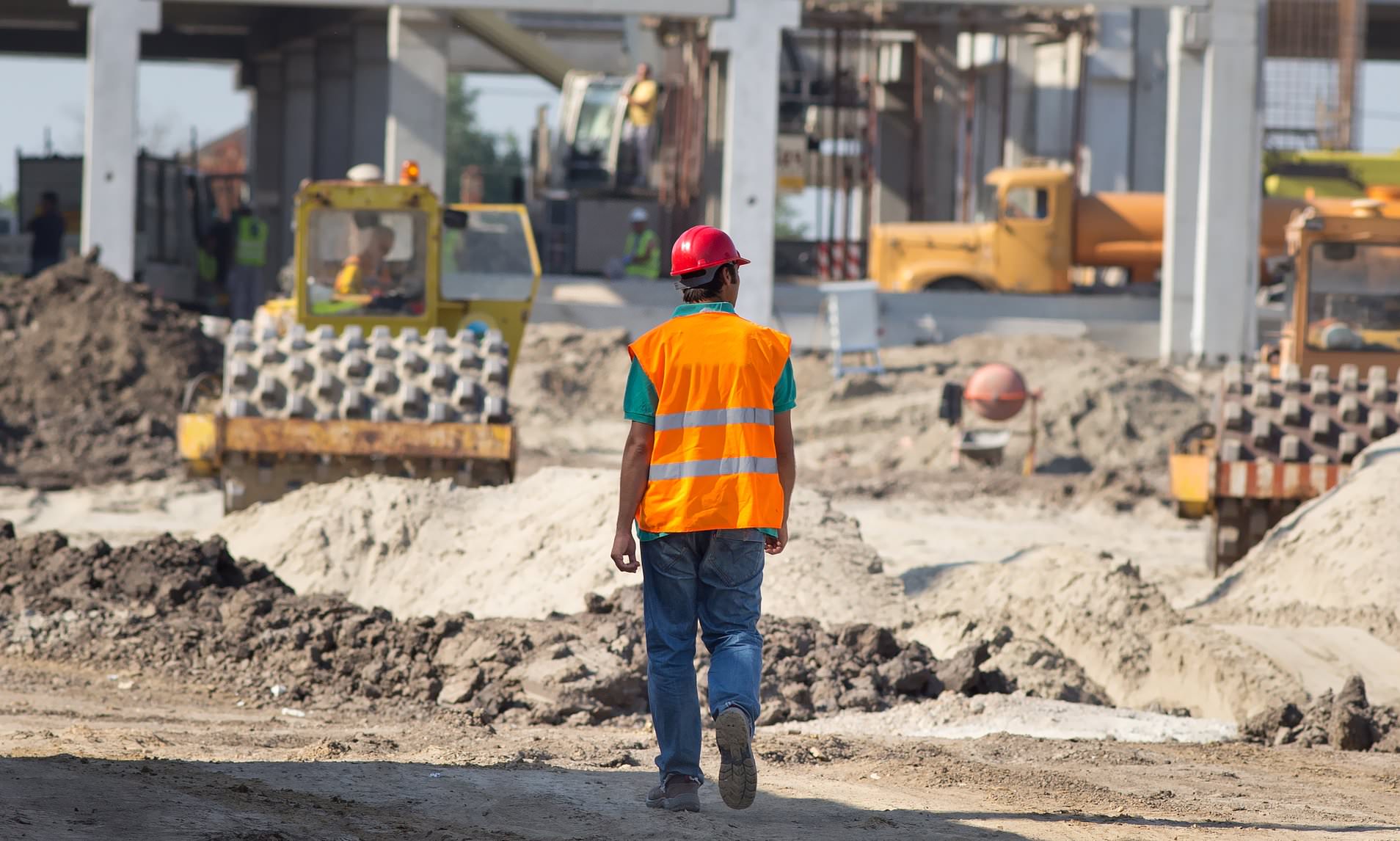

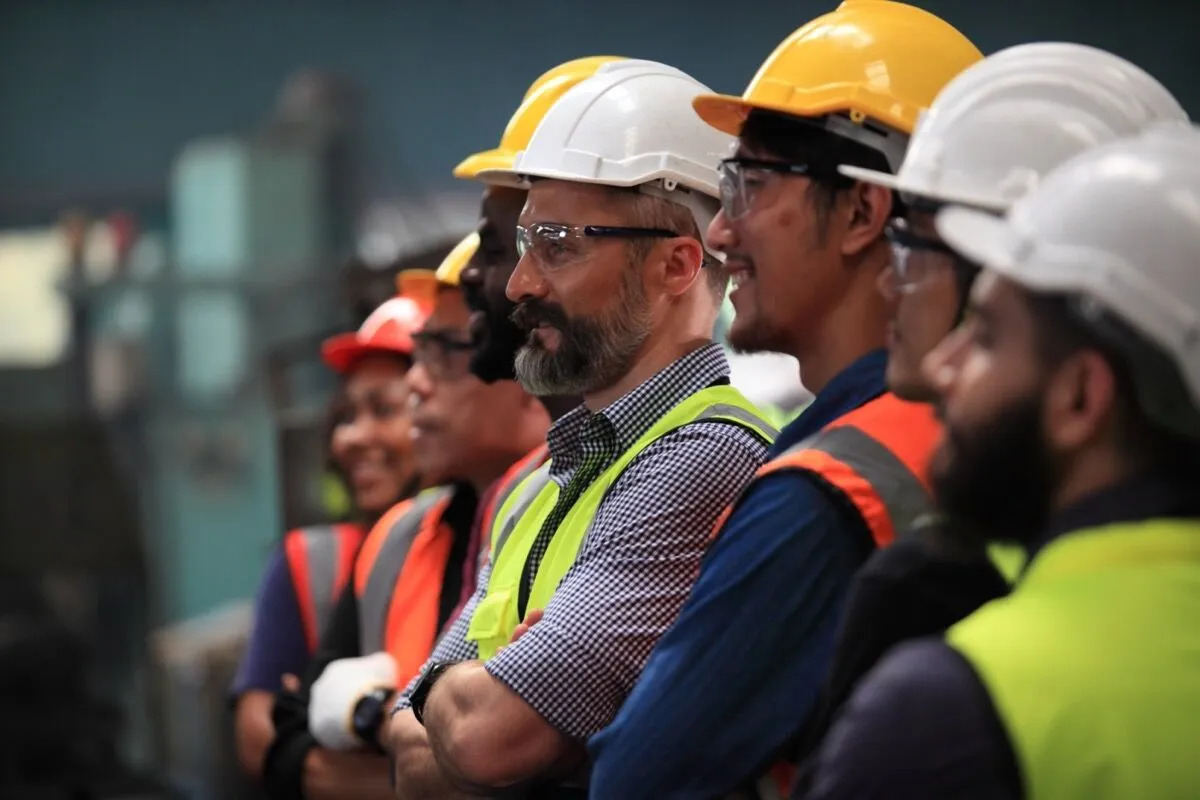

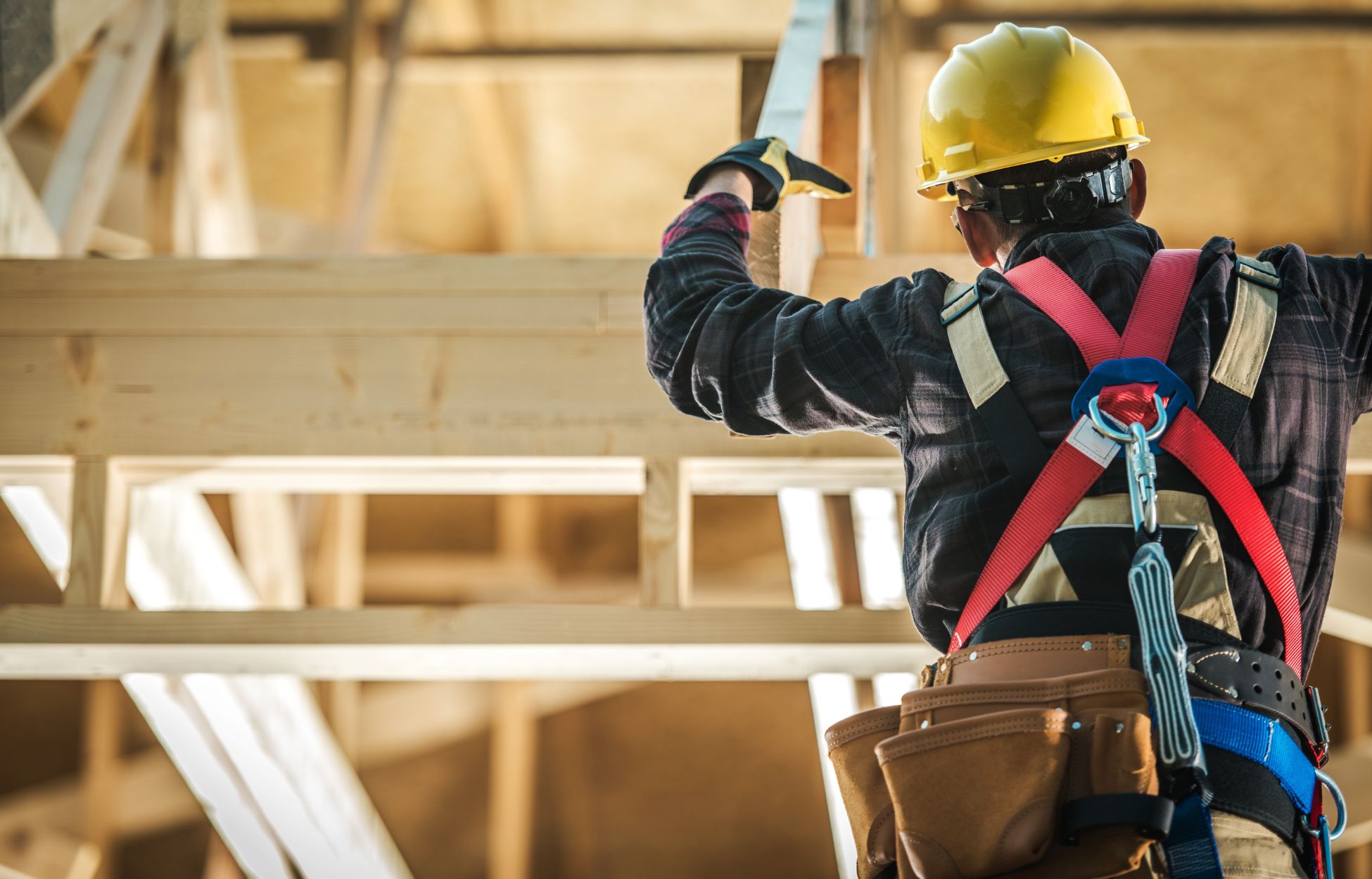
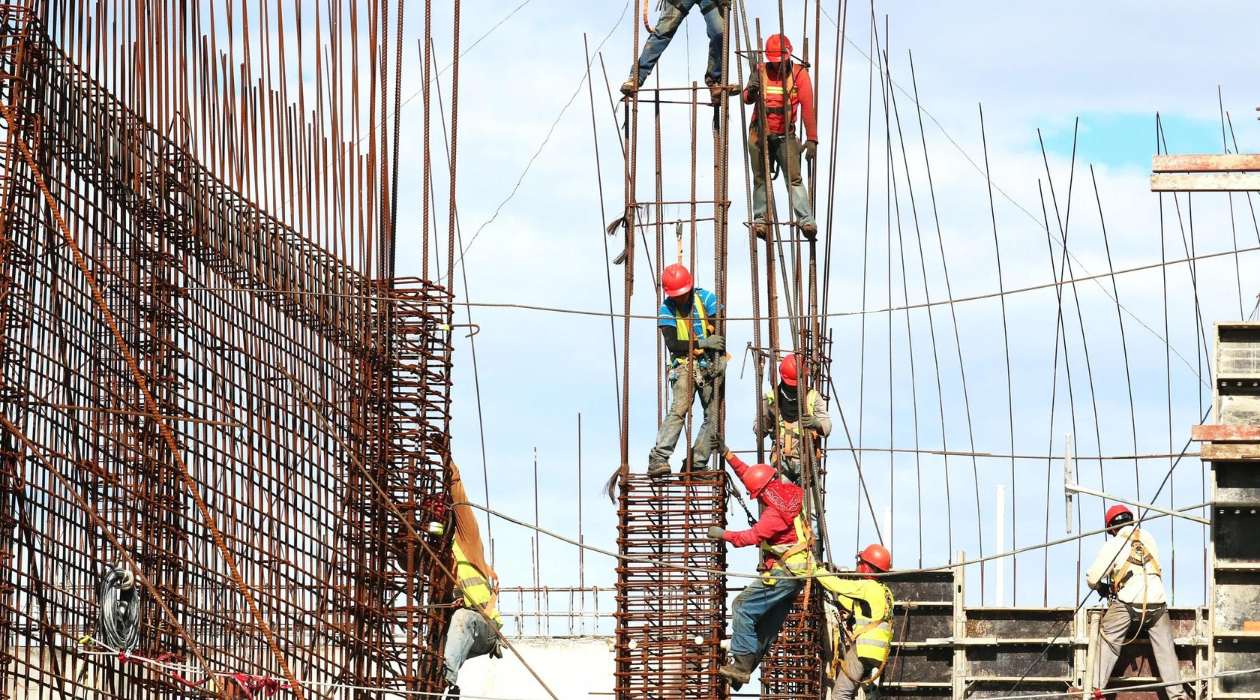





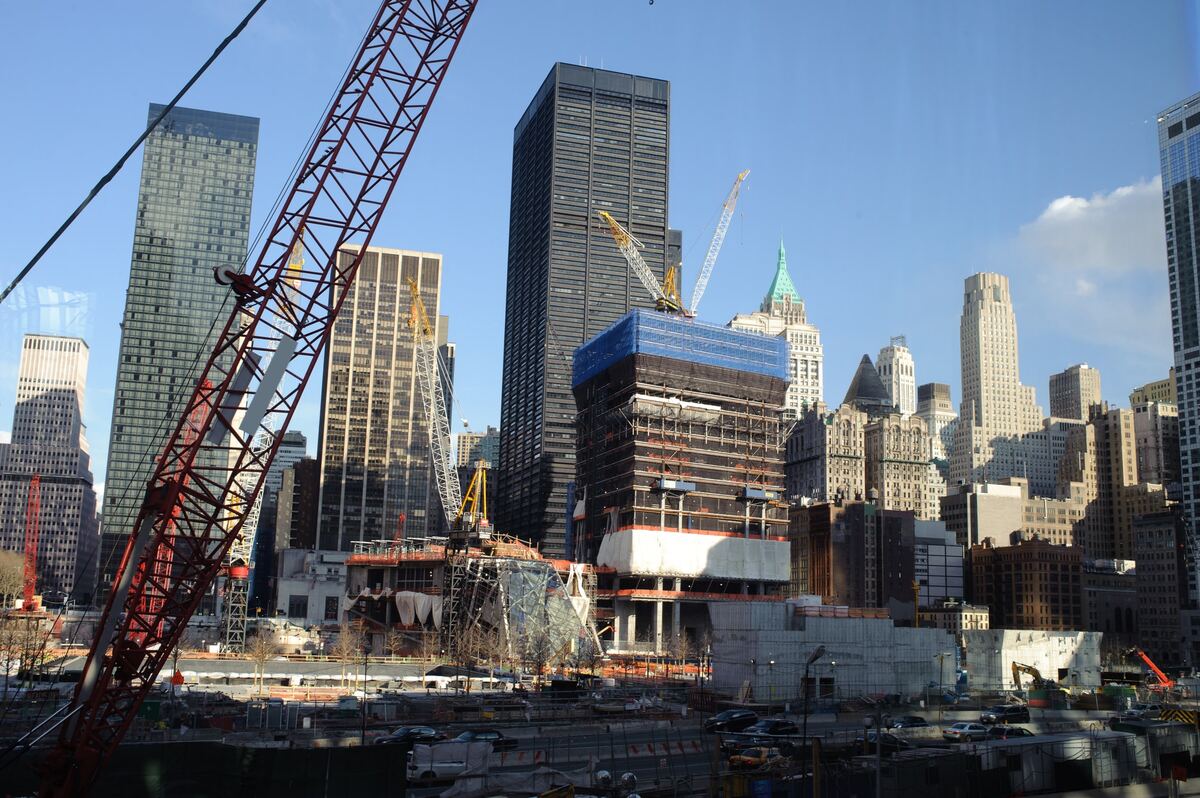
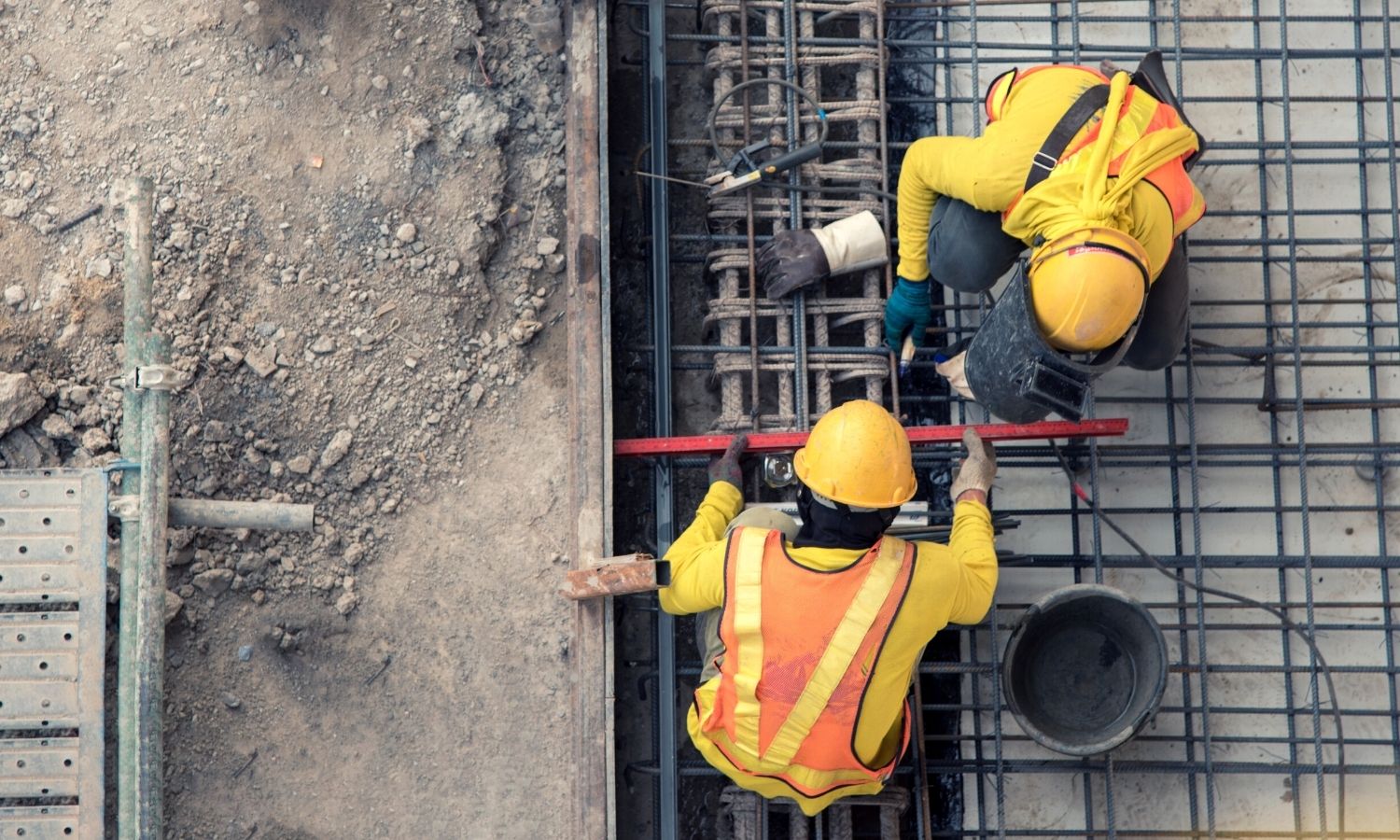

0 thoughts on “How Many Construction Workers Are In The US”